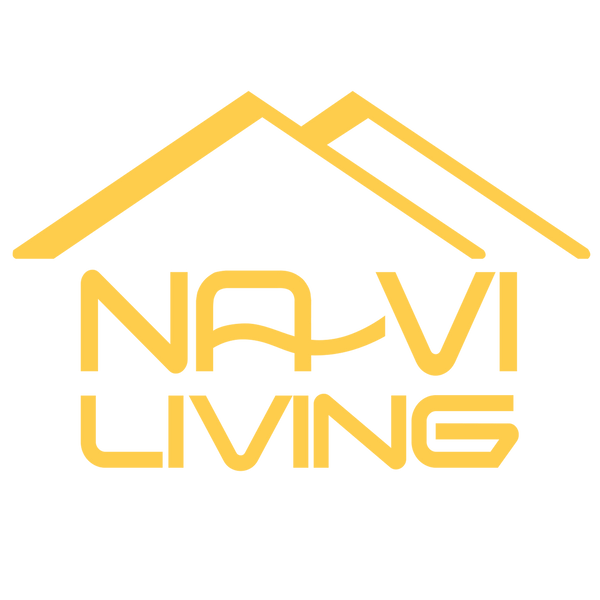Mortgage insurance helps protect lenders and enables buyers to purchase homes with smaller down payments. Understanding how mortgage insurance works and its costs is essential for homebuyers in both Canada and the US. This article explains the basics of mortgage insurance, the different types available, and the key differences between the Canadian and US systems.
- Mortgage Rates in Canada & the U.S.
- Mortgage Pre Approval in Canada: Everything You Need to Know to Secure Your Home Loan
- How Lower Interest Rates Impact Canada’s Economy and Housing
What is Mortgage Insurance?

Definition and Purpose of Mortgage Insurance
Mortgage insurance is a financial product designed to protect lenders from the risk of borrower default. If a borrower fails to make their mortgage payments, mortgage insurance helps cover the lender’s losses, reducing the risk associated with lending. Because lenders are protected, they can offer mortgages with lower down payments, allowing more people to access homeownership.
For homebuyers, mortgage insurance is often required when the down payment is less than 20% of the home's purchase price. While it adds to the cost of borrowing, mortgage insurance opens the door to buying a home sooner instead of waiting to save a larger down payment.
Types of Mortgage Insurance (Default Insurance, Private Mortgage Insurance - PMI)
There are two main types of mortgage insurance widely known in North America:
- Default Insurance: Mostly government-backed, default insurance protects lenders against mortgage losses if the borrower defaults. In Canada, this insurance is commonly provided by the Canada Mortgage and Housing Corporation (CMHC) or similar agencies. It is typically mandatory for buyers with down payments below 20%.
- Private Mortgage Insurance (PMI): Used mainly in the US, PMI is a private insurance policy that protects lenders for conventional loans with down payments under 20%. PMI premiums can vary depending on the borrower's credit score, loan size, and down payment amount. Unlike Canadian default insurance, PMI may be cancelable once the borrower gains sufficient equity in the home.
Differences in Mortgage Insurance Between Canada and the US
Mortgage insurance systems in Canada and the US have notable differences:
- In Canada, mortgage insurance is predominantly government-backed, such as through CMHC. It is usually mandatory when the down payment is less than 20%. Premiums are added either upfront, monthly, or a combination, and are non-cancelable for the life of the mortgage on insured loans.
- In the US, mortgage insurance is often provided by private companies. PMI is customary on conventional loans with down payments under 20%, but rules for premium costs, payment methods, and cancellation can vary between lenders and loan programs. Borrowers have more flexibility to cancel PMI once they reach certain equity thresholds (typically 20% equity).
Understanding these differences is vital for prospective homeowners in both countries to budget accurately and select the best financing options.
How Does Mortgage Default Insurance Work?
Explanation of Mortgage Default Insurance (Focus on Canada’s CMHC and Private Insurers)
Mortgage default insurance, often called mortgage loan insurance in Canada, is designed to protect lenders if borrowers fail to make their mortgage payments. It is primarily offered by the Canada Mortgage and Housing Corporation (CMHC), a government agency, as well as private insurers like Canada Guaranty and Sagen. This insurance does not protect the borrower, it protects the lender from financial losses if a borrower defaults on their mortgage.
Because borrowers with smaller down payments are considered higher risk, mortgage default insurance enables lenders to offer mortgages to buyers who can provide as little as 5% down, expanding access to homeownership. The insurance premiums paid by the borrower are added to the mortgage and repaid over time, making it easier for buyers to manage costs.

When Mortgage Default Insurance Is Required
In Canada, mortgage default insurance is mandatory for homebuyers who make a down payment of less than 20% of the home's purchase price, provided the home price is below $1.5 million. For example, if you put down only 5%, you’ll need this insurance to qualify for a mortgage.
The insurance requirement helps lenders manage risk while allowing more buyers, including many first-time homebuyers and families, to enter the market sooner. If your down payment is 20% or more, mortgage default insurance is generally not required. However, some lenders may still insure the mortgage voluntarily to qualify for better interest rates.
How It Protects Lenders and Benefits Borrowers
Mortgage default insurance protects lenders by covering losses if a borrower is unable to keep up with mortgage payments and eventually defaults. This protection reduces the lender’s risk, enabling them to offer mortgage loans with smaller down payments and often at lower interest rates compared to uninsured mortgages.
For borrowers, the key benefit is access to mortgage financing with a lower upfront investment while maintaining competitive mortgage rates. Although the insurance premium increases the overall cost of borrowing, it can make homeownership possible much sooner for those without a large down payment saved. Additionally, the insurance premium is incorporated into the mortgage payments, spreading out the cost over time for affordability.
How Much Does Mortgage Default Insurance Cost?
Overview of Typical Mortgage Insurance Premium Rates
Mortgage default insurance premiums in Canada are based mainly on the size of your down payment relative to the home price, expressed as the loan-to-value (LTV) ratio. The smaller your down payment (and thus the higher the LTV), the higher your premium rate will be. For example, if you make a down payment between 5% and 9.99%, the premium rate is typically around 4.00% of your mortgage amount. If your down payment is closer to 15%, the premium rate decreases to approximately 2.80%.
Here’s a general breakdown of CMHC insurance premium rates by loan-to-value:
|
Loan-to-Value (LTV) |
Premium on Total Loan (%) |
|
Up to and including 65% |
0.60% |
|
Up to and including 75% |
1.70% |
|
Up to and including 80% |
2.40% |
|
Up to and including 85% |
2.80% |
|
Up to and including 90% |
3.10% |
|
Up to and including 95% |
4.00% |
If you are a first-time homebuyer or purchasing a newly constructed home and opting for a longer amortization (30 years vs. 25 years), an additional 0.20% is typically added to these rates.
Factors Affecting Mortgage Insurance Cost (Loan Amount, Down Payment Size)
Your mortgage insurance cost depends mainly on:
- Loan amount: Larger mortgage amounts mean a higher total premium since it’s a percentage of the loan.
- Down payment size: The smaller your down payment, the higher the loan-to-value, and the higher your premium rate. For instance, a 5% down payment results in higher insurance cost than a 15% down payment.
- Property price and type: Properties over $1.5 million are not eligible for mortgage default insurance in Canada. Also, insurance is generally required only on owner-occupied homes, not investment properties.
- Location: Some provinces charge provincial sales tax (PST) on the insurance premium, which you must pay upfront in cash (not rolled into the mortgage).
One-Time Premium vs. Monthly Premium Payment Options
Mortgage default insurance premiums can usually be paid in one of two ways:
- Single upfront premium: You pay the full premium at closing, which increases your initial mortgage amount but avoids adding it to ongoing payments.
- Financed premium: The premium is added to your mortgage principal and paid off gradually over the life of your loan, increasing your monthly mortgage payments.
Most homebuyers choose to finance the premium, as it reduces their upfront costs, but it results in slightly higher monthly payments.
Examples/Calculations for Typical Mortgage Amounts
Consider a home priced at $300,000 with a down payment of $40,000 (13.33% down):
- Mortgage amount before insurance: $260,000
- Loan-to-value: 86.67% (falls in the 85%-90% range)
- Applicable CMHC premium rate: 2.80%
- Premium calculation: $260,000 x 2.80% = $7,280
- Total mortgage after premium added: $260,000 + $7,280 = $267,280
If the premium is financed, your monthly mortgage payments will be based on the $267,280 mortgage amount instead of $260,000.
What is the Minimum Down Payment for a Home?

Canada’s Minimum Down Payment Requirements by Property Price
In Canada, the minimum down payment depends on the purchase price of the home:
- For homes priced up to $500,000, the minimum down payment is 5% of the purchase price.
- For homes priced between $500,000 and $1,499,999, the down payment is 5% on the first $500,000 plus 10% on the portion above $500,000.
- For homes priced at $1.5 million or more, a minimum down payment of 20% is required to qualify for mortgage default insurance.
For example, if you buy a home for $600,000, your minimum down payment would be $25,000 (5% of first $500,000) plus $10,000 (10% of remaining $100,000), totaling $35,000.
These rules help ensure that buyers are putting sufficient equity into their homes, reducing financial risk for both buyers and lenders.
US Down Payment Options and Typical Requirements
In the US, down payment requirements vary by loan type, lender, and borrower profile:
- Conventional loans typically require a minimum of 5% to 20% down, depending on creditworthiness and loan program.
- Federal Housing Administration (FHA) loans allow down payments as low as 3.5% for qualified borrowers.
- Veterans Affairs (VA) loans and USDA loans may offer financing with no down payment for eligible applicants.
While there is flexibility in the US, putting down less than 20% usually means the borrower must pay private mortgage insurance (PMI), adding to the monthly cost.
How Down Payment Amount Influences Mortgage Insurance Necessity and Cost
Both in Canada and the US, the size of your down payment impacts whether you need mortgage insurance. In Canada, mortgage default insurance is mandatory if the down payment is less than 20%. In the US, PMI is generally required if your down payment is below 20%.
Larger down payments reduce the insurance premium rates and total loan amount, lowering borrowing costs overall. Conversely, smaller down payments result in higher premiums and added monthly costs, which can affect your budgeting and mortgage affordability.
Tips for First-Time Buyers to Save for Down Payments
Saving for a down payment can be challenging but essential for homeownership:
- Set clear savings goals aligned with target home prices and minimum down payments.
- Open dedicated savings accounts or tax-advantaged accounts like a Tax-Free Savings Account (TFSA) in Canada or a First-Time Homebuyer IRA in the US.
- Automate monthly contributions to build savings consistently over time.
- Consider government programs designed to assist first-time buyers, such as the Home Buyers’ Plan (HBP) in Canada or down payment assistance programs in various US states.
- Reduce discretionary spending and prioritize saving by tracking budgets and expenses.
With patience and planning, many first-time buyers successfully reach their down payment goals and achieve homeownership.
How Long Does It Take to Get an Insured Mortgage?
Key Steps in the Insured Mortgage Approval Process
The mortgage approval process with insurance involves several key steps:
- Application submission: The borrower completes a mortgage application with their lender.
- Documentation review: The lender reviews income, credit, and property details to assess borrower eligibility.
- Insurance application: For high-ratio mortgages (down payment less than 20%), the lender submits a mortgage insurance application to an insurer like CMHC.
- Insurance underwriting: The insurer reviews the application to ensure it meets eligibility criteria and manages risk.
- Final approval: Once the insurance is approved, the lender issues a mortgage commitment to the borrower.
Typical Timeline from Application to Approval
The typical approval timeline for mortgage default insurance in Canada, such as CMHC insurance, ranges from 2 to 5 business days once the lender submits the application. Most approvals happen within a standard timeframe aligned with the home purchase conditions, usually falling within a 7 to 10-day subject removal period.
If the mortgage or property is complex, like a strata property with depreciation reports or unique scenarios, approval could take longer. Good communication between borrower, lender, and insurer helps keep the process efficient.
Factors That Can Speed Up or Delay Insurance Approval
Approval speed depends on:
- Completeness of documentation: Missing or incorrect documentation can cause delays.
- Property type and condition: Standard single-family homes are quicker to approve than properties requiring extra reports or inspections.
- Lender experience: Experienced brokers and lenders familiar with the insurer’s process can streamline approval.
- Borrower eligibility: Clear credit history and stable income help speed approvals.
Documentation and Preparation Tips to Expedite the Process
To help ensure quick mortgage insurance approval:
- Prepare accurate proof of income, employment, and credit history.
- Provide complete purchase agreements and property details upfront.
- Work closely with your mortgage broker or lender and proactively ask if anything else is needed.
- If buying a strata property, gather all relevant strata documents early.
- Avoid submitting offers without financing conditions unless you have pre-approval.
Conclusion
Mortgage insurance plays a vital role in expanding homeownership opportunities for buyers who may not have a large down payment saved. By protecting lenders, mortgage insurance allows borrowers in Canada and the US to qualify for mortgages with lower down payments, opening doors to affordable financing. Understanding the types of mortgage insurance, costs, approval timelines, and regional differences empowers homebuyers to navigate the mortgage process with confidence.
Whether you’re a first-time buyer or seasoned investor, being informed about mortgage insurance ensures you can plan your finances wisely and make smart homebuying decisions. For expert guidance, up-to-date listings, and mortgage support tailored to Canadian and US markets, visit naviliving.com and take the next step toward your dream home with confidence.




